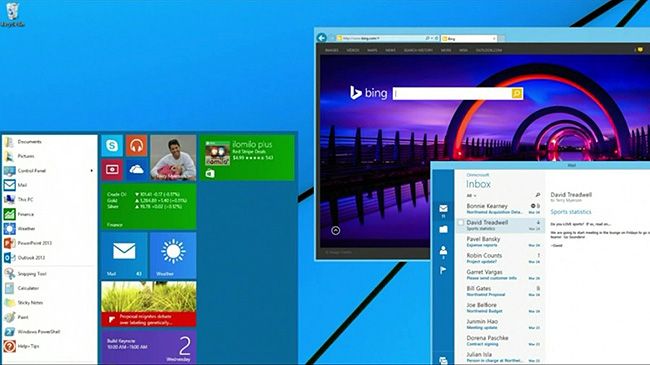The Microsoft Build 2014 developers’ conference taking place this week has brought important news for the company’s ecosystem. One of the most important revelations relates to the imminent update for Windows 8.1 to arrive on April 8, which, in addition to bringing back the much-missed desktop Start menu, will profoundly shake up ModernUI apps, allowing them to function in a window and integrate with the OS’s traditional navigation system.
Metro Applications, an annoyance on desktop computers
One of the biggest flaws with Windows 8 was that it was oriented too heavily toward the touchscreen market. Its sibling Windows RT is the mini version of the operating system for use on tablets, whose absence on traditional desktop computers was made up for the use of apps exclusively designed to work in full-screen with touch control.
The problem arose in trying to take this experience to mouse-navigated computers, making the use of Metro apps very uncomfortable, especially given the existence of traditional alternatives in the form of desktop software that was much more functional than those email clients, news apps, or social network managers that Microsoft was pushing its users to adopt.

The principal novelty of Windows 8.1 Update 1 is the integration of Metro apps to function in windows on the desktop, something that has much to do with the recently announced universal app system that converts a single app into a multiplatform software so it works equally on both Windows Phone and on the different versions of Windows. No more having two versions of the same app. (For example, Windows 8 includes both a traditional calculator and the Metro version to use in fullscreen.)
The return of the Start menu
Righting wrongs is always a wise policy. Windows 8.1 already re-added the Start icon on the desktop taskbar with a pop-up pseudo-menu that you can access by right-clicking. Although there have long been several unofficial ways to bring back the pop-up menu in use until Windows 7, Microsoft has finally decided to return to the same version, with the added benefit that it will be integrated with the “tiles” system. That is, you’ll no longer have to access Metro for anything whatsoever, and can work with the operating system without leaving your desktop.






